
views
Harvesting Squash from a Garden

Wait for the squash to reach 8–12 inches (20–30 cm) in length. While the length of a mature butternut squash can vary depending on its variety and soil conditions, most butternut squash will reach a length of 8–12 inches (20–30 cm). When your squash reaches this length and stops growing, it will be close to harvesting time. Squashes grown in richer soils will be longer in length than those in less rich soils.

Watch for the stem to turn brown before harvesting. When a butternut squash ripens, the stem will turn color, from green to brown. If the stem is green, leave the squash on the vine a little longer. In addition to being brown in color, the stem will also be dry when the squash is ready to harvest. When cutting your butternut squash off the vine, make sure you leave as much of the stem on as possible, or at least 1 in (2.5 cm). Removing the stem from the squash may cause the flesh to peel open, allowing bacteria to get inside the squash and causing it to rot more quickly.

Look for a golden or dark beige color. The skin of a ripe butternut squash can also be described as an orange-ish tan. Also, choose a squash with a uniform color. The darker the color of the squash the better. If the squash is a light-yellow color or if you see green patches or lines on its exterior, it isn’t ripe yet.
Selecting Squash at the Store

Choose a squash with a dark beige, matte skin. Avoid squashes that are light yellow or have green patches, and ones that have a shiny exterior. A shiny or waxy exterior is a sign that the squash was picked too early. Most squashes will have a large pale spot on their exterior. This is just where the squash rested on the ground and isn’t a sign that it’s unripe.
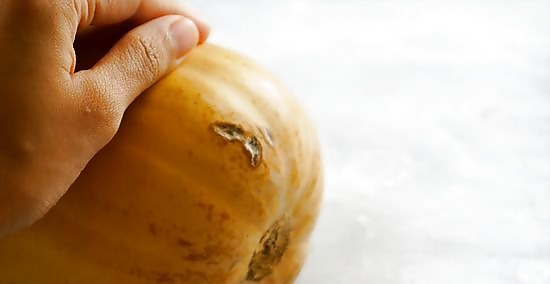
Avoid choosing a squash with cuts, soft spots, or brown marks. It is okay if the squash’s surface has blemishes, but cuts or soft spots on the rind may lead to mold or rot, and should be avoided. Also, steer clear of a squash with brown marks. Brown marks on a squash are caused by frost and are a sign that the squash may have an undesirable texture and not last very long.
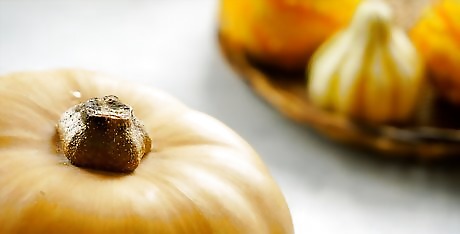
Make sure the stem is still attached to the squash you choose. If you see a butternut squash with a missing stem at the grocery store, that could be a sign that it is overripe. Look for a squash with a stem that feels firm and is deep brown in color. A squash without its stem will also rot faster than one with a stem.
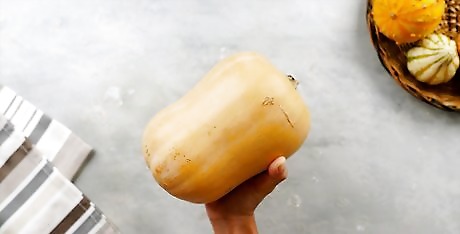
Opt for a squash that feels heavy. After finding a squash that has a dark and uniform beige exterior and is free of cuts and blemishes, pick it up and compare its weight to other squashes. Try to get a general sense of the average weight of the squashes. If a squash feels relatively light compared to the rest of the bunch, it may not be ripe yet.
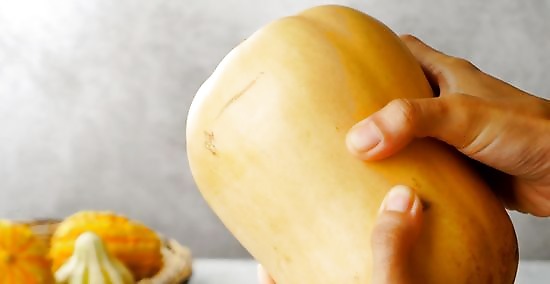
Feel for a hard exterior before settling on a squash. Use your fingernail to gently push into the surface of the squash. If your nail goes through with little resistance, it may not be ripe enough. A ripe butternut squash should feel hard like an unripe avocado.

Select a squash that sounds hollow when you tap on it. Learning the difference between the sound of a ripe butternut squash and that of an unripe one will take some practice. The best way to learn is to ask a grocery store attendant or a butternut squash grower at a farmer’s market for help.
Storing Your Squash

Put your squash in a cool and dark place to make it last. A harvested butternut squash can last for up to 2 – 3 months if it is kept in a cool and dark place. Your basement, crawl space, or cellar would be a good storage location. The ideal temperature range at which to store butternut squash is 50–60 °F (10–16 °C).
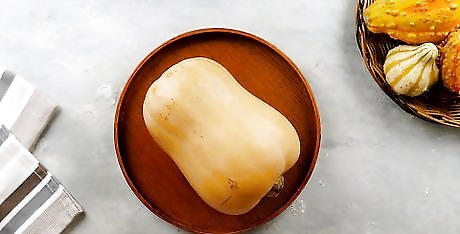
Store your squash at room temperature if you’ll be cooking it soon. A ripe squash will stay good for around 14 days when stored at room temperature. Remove the squash from any plastic packaging before storing. Avoid refrigerating an unsliced butternut squash to preserve its texture.
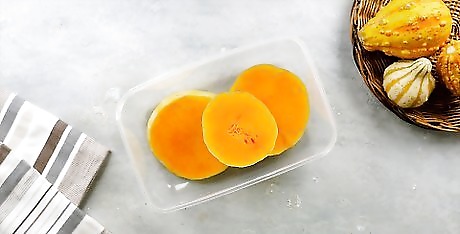
Keep squash in your refrigerator after slicing open. After slicing open your squash, the pieces will stay fresh for around 2 – 4 days if refrigerated. Before putting freshly sliced squash pieces in your refrigerator, put them into an airtight container or sealable freezer bag, and squeeze out any excess air. Add a label to the bag or container to record how long you’ve kept it refrigerated.
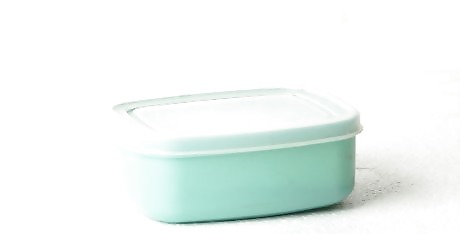
Refrigerate or freeze cooked squash to extend its shelf life. Cooked butternut squash will stay good for about 4 – 5 days in your refrigerator. When stored in a freezer, butternut squash will keep its fresh taste for around 10 – 12 months. Store the cooked pieces in a sealable freezer bag or airtight container.
















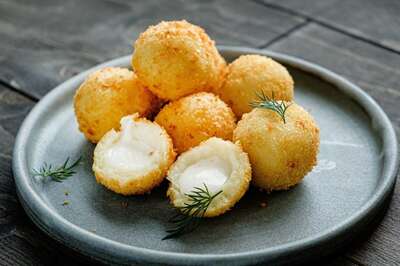



Comments
0 comment